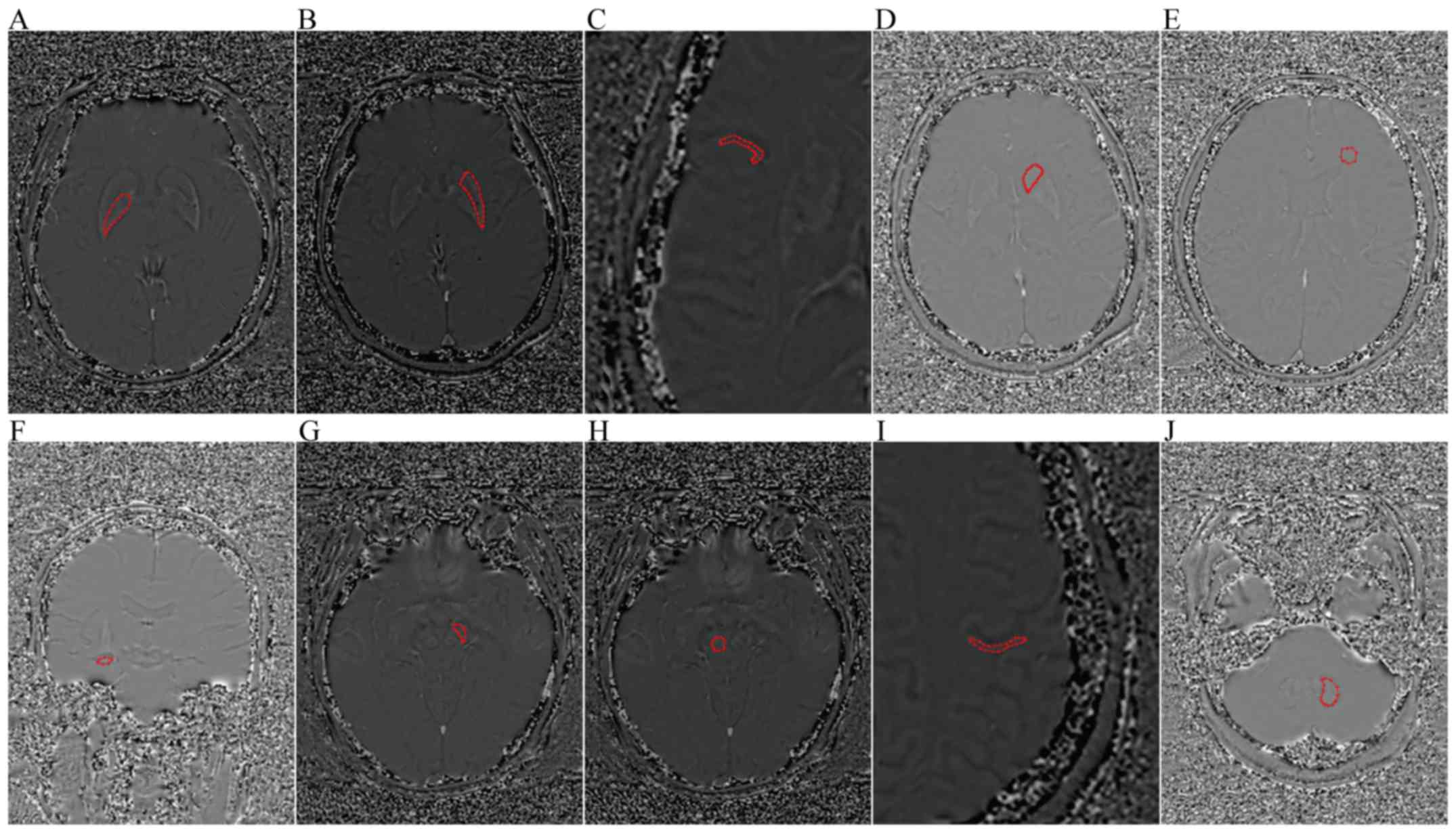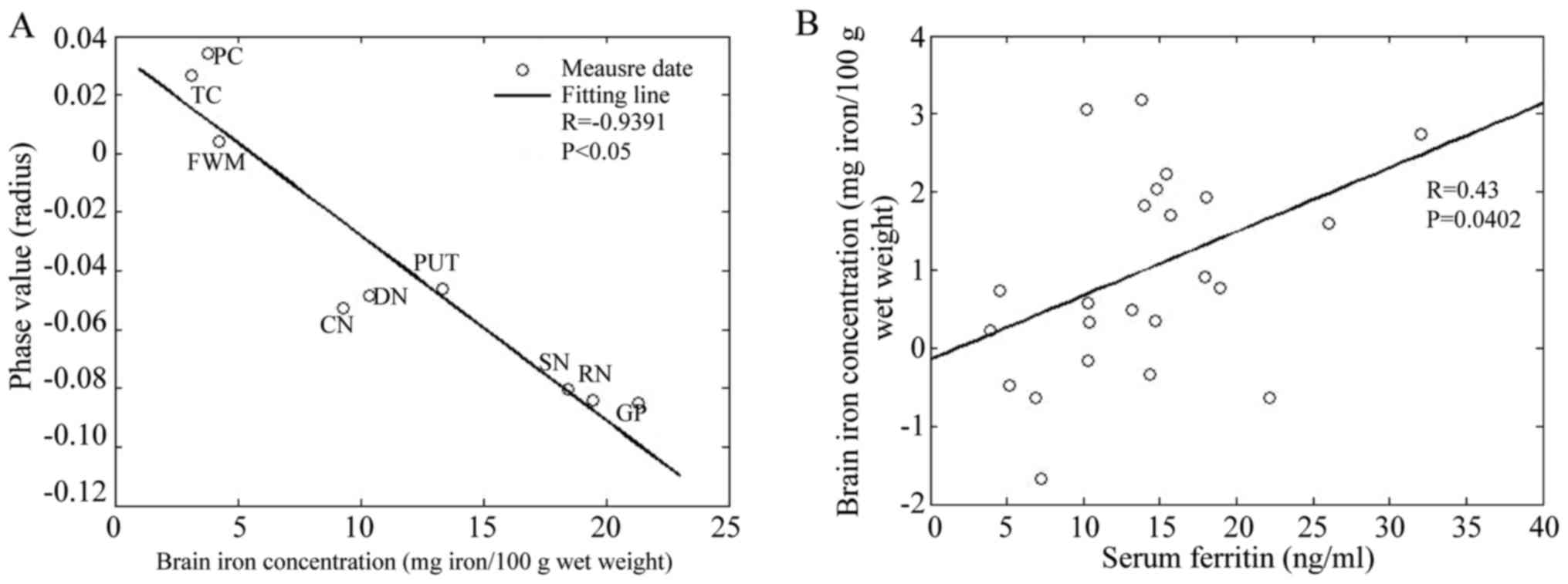|
1
|
Sperling RA, Aisen PS, Beckett LA, Bennett
DA, Craft S, Fagan AM, Iwatsubo T, Jack CR Jr, Kaye J, Montine TJ,
et al: Toward defining the reclinical stages of Alzheimer's
disease: Recommendations from the National Institute on
Aging-Alzhermer's Association workgroups on diagnostic guidelines
for Alzheimer's disease. Alzheimers Dement. 7:280–292. 2011.
View Article : Google Scholar : PubMed/NCBI
|
|
2
|
Albert MS, DeKosky ST, Dickson D, Dubois
B, Feldman HH, Fox NC, Gamst A, Holtzman DM, Jagust WJ, Petersen
RC, et al: The diagnosis of mild cognitive impairment due to
Alzheimer's disease: Recommendations from the National Institute on
Aging-Alzheimer's Association workgroups on diagnostic guidelines
for Alzheimer's disease. Alzheimers Dement. 7:270–279. 2011.
View Article : Google Scholar : PubMed/NCBI
|
|
3
|
McKhann GM, Knopman DS, Chertkow H, Hyman
BT, Jack CR Jr, Kawas CH, Klunk WE, Koroshetz WJ, Manly JJ, Mayeux
R, et al: The diagnosis of dementia due to Alzheimer's disease:
Recommendations from the National Institute on Aging-Alzheimer's
Association workgroups on diagnostic guidelines for Alzheimer's
disease. Alzheimers Dement. 7:263–269. 2011. View Article : Google Scholar : PubMed/NCBI
|
|
4
|
Petersen RC: Mild cognitive impairment.
Continuum (Minneap Minn). 22:404–418. 2016.PubMed/NCBI
|
|
5
|
Ota K, Oishi N, Ito K and Fukuyama H;
SEAD-J Study Group, : Alzheimer's Disease Neuroimaging Initiative:
Effects of imaging modalities, brain atlases and feature selection
on prediction of Alzheimer's disease. J Neurosci Methods.
256:168–183. 2015. View Article : Google Scholar : PubMed/NCBI
|
|
6
|
Goodman L: Alzheimer's disease; a
clinico-pathologic analysis of twenty-three cases with a theory on
pathogenesis. J Nerv Ment Dis. 118:97–130. 1953. View Article : Google Scholar : PubMed/NCBI
|
|
7
|
Honda K, Casadesus G, Petersen RB, Perry G
and Smith MA: Oxidative stress and redox-active iron in Alzheimer's
disease. Ann N Y Acad Sci. 1012:179–182. 2004. View Article : Google Scholar : PubMed/NCBI
|
|
8
|
Chamberlain R, Reyes D, Curran GL,
Marjanska M, Wengenack TM, Poduslo JF, Garwood M and Jack CR Jr:
Comparison of amyloid plaque contrast generated by T2-weighted,
T2*-weighted, and susceptibility-weighted imaging methods in
transgenic mouse models of Alzheimer's disease. Magn Reson Med.
61:1158–1164. 2009. View Article : Google Scholar : PubMed/NCBI
|
|
9
|
Zhou XX, Qin HL, Li XH, Huang HW, Liang
YY, Liang XL and Pu XY: Characterizing brain mineral deposition in
patients with Wilson disease using susceptibility-weighted imaging.
Neurol India. 62:362–366. 2014. View Article : Google Scholar : PubMed/NCBI
|
|
10
|
Crespo ÂC, Silva B, Marques L, Marcelino
E, Maruta C, Costa S, Timóteo A, Vilares A, Couto FS, Faustino P,
et al: Genetic and biochemical markers in patients with Alzheimer's
disease support a concerted systemic iron homeostasis
dysregulation. Neurobiol Aging. 35:777–785. 2014. View Article : Google Scholar : PubMed/NCBI
|
|
11
|
Petersen RC, Smith GE, Waring SC, Ivnik
RJ, Tangalos EG and Kokmen E: Mild cognitive impairment: Clinical
characterization and outcome. Arch Neurol. 56:303–308. 1999.
View Article : Google Scholar : PubMed/NCBI
|
|
12
|
Dubois B, Feldman HH, Jacova C, Dekosky
ST, Barberger-Gateau P, Cummings J, Delacourte A, Galasko D,
Gauthier S, Jicha G, et al: Research criteria for the diagnosis of
Alzheimer's disease: Revising the NINCDS-ADRDA criteria. Lancet
Neurol. 6:734–746. 2007. View Article : Google Scholar : PubMed/NCBI
|
|
13
|
Hallgren B and Sourander P: The effect of
age on the non-haemin iron in the human brain. J Neurochem.
3:41–51. 1958. View Article : Google Scholar : PubMed/NCBI
|
|
14
|
Lan AP, Chen J, Chai ZF and Hu Y: The
neurotoxicity of iron, copper and cobalt in Parkinson's disease
through ROS-mediated mechanisms. Biometals. 29:665–678. 2016.
View Article : Google Scholar : PubMed/NCBI
|
|
15
|
Wu Y, Passananti M, Brigante M, Dong W and
Mailhot G: Fe(III)-EDDS complex in Fenton and photo-Fenton
processes: From the radical formation to the degradation of a
target compound. Environ Sci Pollut Res Int. 21:12154–12162. 2014.
View Article : Google Scholar : PubMed/NCBI
|
|
16
|
Connor JR, Menzies SL, St Martin SM and
Mufson EJ: A histochemical study of iron, transferrin, and ferritin
in Alzheimer's diseased brains. J Neurosci Res. 31:75–83. 1992.
View Article : Google Scholar : PubMed/NCBI
|
|
17
|
Grundke-Iqbal I, Fleming J, Tung YC,
Lassmann H, Iqbal K and Joshi JG: Ferritin is a component of the
neuritic (senile) plaque in Alzheimer dementia. Acta Neuropathol.
81:105–110. 1990. View Article : Google Scholar : PubMed/NCBI
|
|
18
|
Liu B, Moloney A, Meehan S, Morris K,
Thomas SE, Serpell LC, Hider R, Marciniak SJ, Lomas DA and Crowther
DC: Iron promotes the toxicity of amyloid beta peptide by impeding
its ordered aggregation. J Biol Chem. 286:4248–4256. 2011.
View Article : Google Scholar : PubMed/NCBI
|
|
19
|
Egaña JT, Zambrano C, Nuñez MT,
Gonzalez-Billault C and Maccioni RB: Iron-induced oxidative stress
modify tau phosphorylation patterns in hippocampal cell cultures.
Biometals. 16:215–223. 2003. View Article : Google Scholar : PubMed/NCBI
|
|
20
|
Ayton S, Faux NG and Bush AI: Association
of cerebrospinal fluid ferritin level with preclinical cognitive
decline in APOE-ε4 carriers. JAMA Neurol. 74:122–125. 2017.
View Article : Google Scholar : PubMed/NCBI
|
|
21
|
Haacke EM, Makki M, Ge Y, Maheshwari M,
Sehgal V, Hu J, Selvan M, Wu Z, Latif Z, Xuan Y, et al:
Characterizing iron deposition in multiple sclerosis lesions using
susceptibility weighted imaging. J Magn Reson Imaging. 29:537–544.
2009. View Article : Google Scholar : PubMed/NCBI
|
|
22
|
Schiepers OJ, van Boxtel MP, de Groot RH,
Jolles J, de Kort WL, Swinkels DW, Kok FJ, Verhoef P and Durga J:
Serum iron parameters, HFE C282Y genotype, and cognitive
performance in older adults: Results from the FACIT study. J
Gerontol A Biol Med Sci. 65:1312–1321. 2010. View Article : Google Scholar
|
|
23
|
Milward EA, Bruce DG, Knuiman MW, Divitini
ML, Cole M, Inderjeeth CA, Clarnette RM, Maier G, Jablensky A and
Olynyk JK: A cross-sectional community study of serum iron measures
and cognitive status in older adults. J Alzheimers Dis. 20:617–623.
2010. View Article : Google Scholar : PubMed/NCBI
|
|
24
|
Wang ZX, Tan L, Wang HF, Ma J, Liu J, Tan
MS, Sun JH, Zhu XC, Jiang T and Yu JT: Serum iron, zinc, and copper
levels in patients with Alzheimer's disease: A replication study
and meta-analyses. J Alzheimers Dis. 47:565–581. 2015. View Article : Google Scholar : PubMed/NCBI
|
|
25
|
House MJ, St Pierre TG, Milward EA, Bruce
DG and Olynyk JK: Relationship between brain R(2) and liver and
serum iron concentrations in elder men. Magn Reson Med. 63:275–281.
2010. View Article : Google Scholar : PubMed/NCBI
|
|
26
|
Lin D, Ding J, Liu JY, He YF, Dai Z, Chen
CZ, Cheng WZ, Zhou J and Wang X: Decreased serum hepcidin
concentration correlates with brain iron deposition in patients
with HBV-related cirrhosis. PLoS One. 8:e655512013. View Article : Google Scholar : PubMed/NCBI
|












